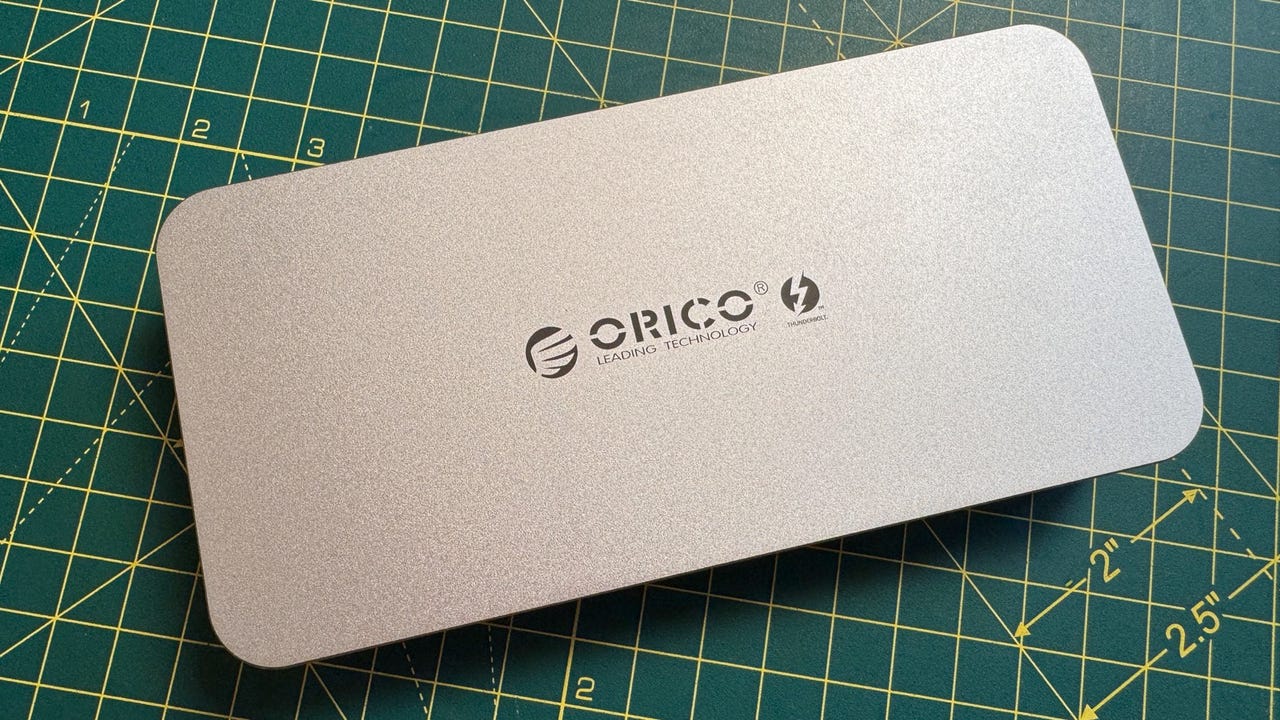
































Orico 12-in-1 Thunderbolt 4 Dock
The switch to USB-C ports in modern laptop and desktop computer systems serves about 90% of users well. These individuals primarily use USB-C devices and have little need for HDMI or Ethernet ports. For professionals who require connections to a wired network, multiple displays, and a broad array of devices and storage options, however, relying on a couple of USB-C ports isn't enough.
Also: The best laptop docking stations you can buy
This is precisely where a high-end professional Thunderbolt 4 dock, like theOrico 12-in-1 dock , proves invaluable. Such a dock bridges the gap, offering the extensive connectivity professionals demand and ensuring seamless integration of all necessary peripherals and networks.
View at AmazonTo properly test the dock, one must look beyond the spec sheet and verify whether everything performs as claimed. A significant part of my job is to ensure manufacturers remain truthful and to prevent them from exaggerating their marketing claims.
Also: What is Thunderbolt, and how is it different from USB-C?
I'm pleased to report that this dock passed with flying colors. The ports all offer the speeds and screen resolutions they promise, the dock is stable in use, and it remains pleasantly cool, even under heavy loads.
This dock, like every other one I review, undergoes extensive testing to make sure it delivers on what it promises.
In many ways, I knew that I didn't need to test any of this because this is a certified Thunderbolt 4 dock. Anything that carries the Thunderbolt logo has been rigorously tested. However, as the old saying goes -- trust, but verify.
Ports on the front of the Orico 12-in-1 Thunderbolt 4 dock
Note that although this hardware supports dual displays through an HDMI port and a DisplayPort, Mac users equipped with the base M1/M2/M3 processors, as well as iPad Pro users, are limited to extending a single display. This restriction stems from Apple's limitations, rather than any constraints imposed by the Thunderbolt dock.
Also: The best network-attached storage devices you can buy
There are a couple of downsides to this dock. The first is that its power supply is massive. In fact, it's bigger and heavier than the dock itself, which essentially rules out its use as a portable dock.
Ports on the rear of the Orico 12-in-1 Thunderbolt 4 dock
Another issue I encountered is that connecting the dock to a device automatically turns the volume down to zero. While I've come across docks that mute the audio when headphones are plugged in, it's unusual for this to happen consistently, regardless of the circumstances. Moreover, it's peculiar that it seems to lower the volume by actually turning it down, showing the on-screen prompt for volume adjustment every time you connect the dock to your system. Furthermore, if you try to turn the audio up, the dock will fight you and turn it down again.
The first couple of times that I connected this dock to my system, I was left wondering, "Hey, why is my volume low?"
This is definitely not a deal breaker, but it's something worth knowing about.
Most people will never need a dock, and of those who do, only a select few will require a Thunderbolt-certified dock. Those in pursuit of hardware that consistently delivers on its promises, however, investing in a high-end -- and that unfortunately means high-priced -- piece of equipment makes sense.
For professionals such as photographers, videographers, 3D modelers, or audio engineers, opting for a certified piece of hardware is logical. In this context, theOrico 12-in-one Thunderbolt 4 dock stands out as an option that will not disappoint.
 Hot Tags :
Tech
Computing
Laptops
Hot Tags :
Tech
Computing
Laptops